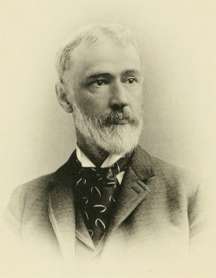Eli Whitney Blake Jr.
| Eli Whitney Blake Jr. | |
|---|---|
 | |
| Born |
April 20, 1836 New Haven, Connecticut, U.S. |
| Died |
January 10, 1895 (aged 58) Hampton, Connecticut, U.S. |
| Occupation | Scientist |
Eli Whitney Blake Jr. (April 20, 1836 – January 10, 1895)[1] was an American scientist. His father and namesake was an inventor and partner of the Blake Brothers manufacturing firm. The origin of the name Eli Whitney comes from Blake senior's uncle Eli Whitney, who changed the face of the cotton industry with the invention of the cotton gin.
Blake graduated from Yale in 1857, after which he spent a year at Sheffield Scientific School. He was a member of Skull and Bones, class of 1857. Following his time at Sheffield, he traveled to Europe, where he studied chemistry and physics in the universities of Heidelberg, Marburg, and Berlin.
On his return to America, he was made professor of chemistry and physics at the University of Vermont (1867). After less than a year, he went to Cornell University, where he was professor of physics and mechanic arts (1868–1870). During this time he also acted temporarily as professor of physics at Columbia College (1868–1869). From 1870 to 1895, he filled the chair of physics at Brown University.
Although not a well-known figure in the scientific community, Blake was a member of the American Association for the Advancement of Science and other similar associations. He also contributed to various scientific periodicals, such as the American Journal of Science and Arts.
See also
References
- ↑ In memoriam - Eli Whitney Blake, LL.D. born April 20, 1836, died October 1, 1895. Providence: Doctor's Club. 1895. p. 3. Retrieved 20 January 2016.
- Entry in Encyclopedia Brunoniana

Further reading
- Alida Blake Hazard: The Blakes of 77 Elm Street: A Family Sketch. Quiniipiack Press, New Haven 1925. pp. 33–34.